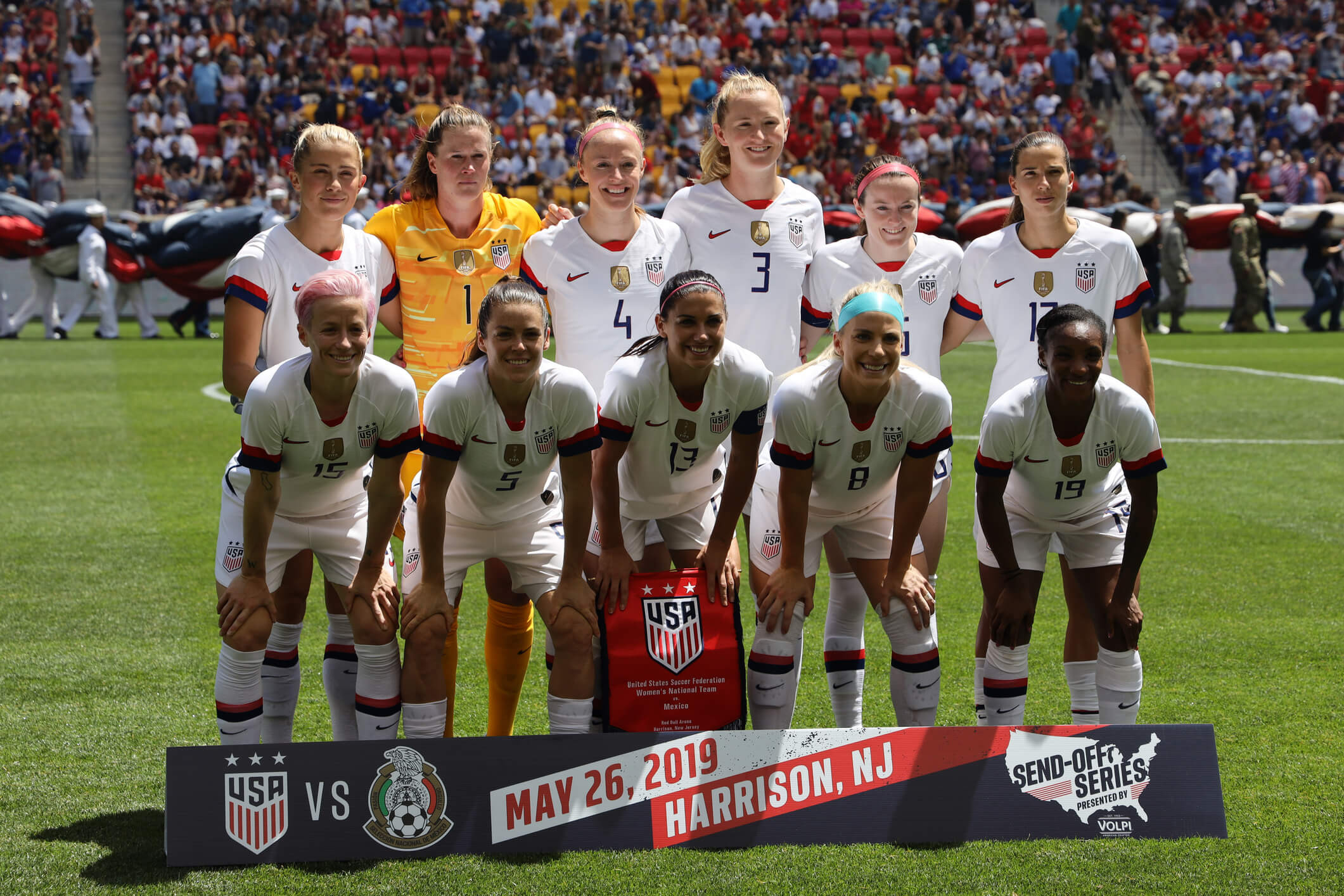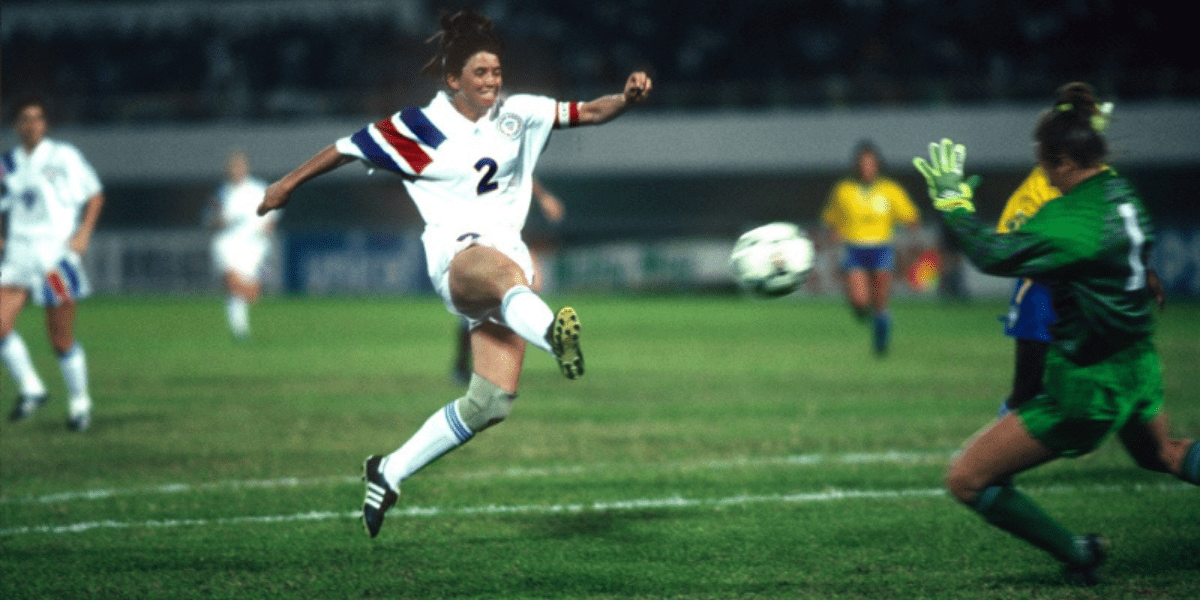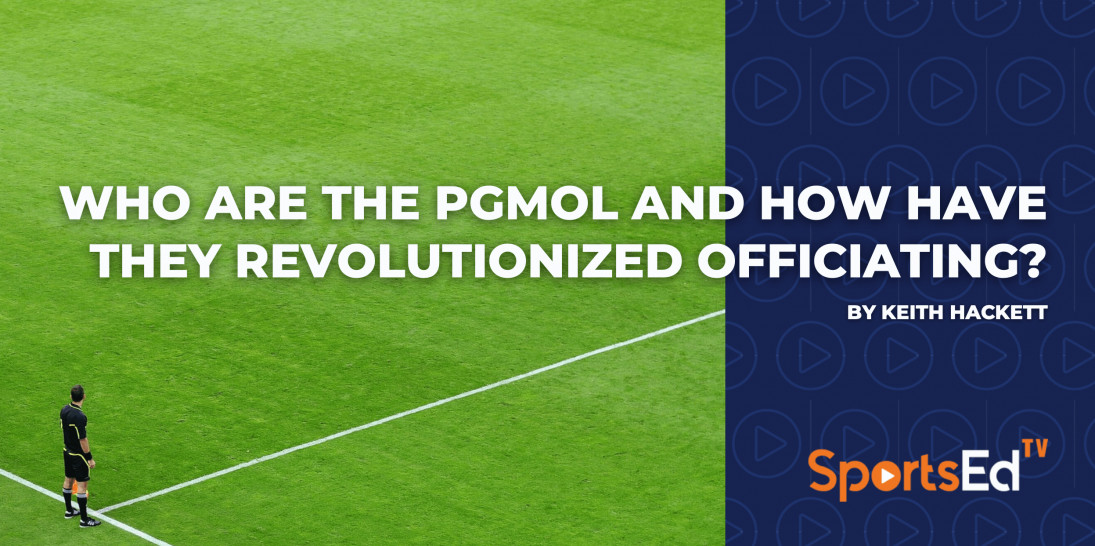Soccer
Welcome and thanks for visiting...

The History of USA Women’s Soccer, Title IX, and My Career

SportsEdTV Soccer is committed to bringing athletes, coaches, and parents pro-level Soccer education videos for FREE. All levels, anywhere, anytime. Check out our full instructional library and sign up to join our Soccer community.
April Heinrichs captained the US Women's National Team to win the first ever FIFA Women's World Cup in 1991, and in 1998 became the first ever female player inducted into the National Soccer Hall of Fame. She went on to be the head coach of the USWNT and led the team to a silver medal at the 2000 Olympics, 3rd place in the 2003 FIFA World Cup, and a gold medal at the 2004 Olympics. Here, she discusses how her career developed right alongside the significant growth milestones for US women's soccer as a whole.
My personal mantra since graduating from the University of North Carolina in 1986 has been, “I am the luckiest person I know.” Below is a brief explanation of my story, and the good fortune I encountered by my own playing career being perfectly aligned with the development of women’s soccer in the USA.
Title IX Overview
Title IX played a critical role in both my own development, and that of USA women’s soccer as a whole. Title IX legislation was passed in 1972 as a tool to equalize opportunities for women in the USA. It was intended to give women the opportunity to attend universities and receive an education, and ultimately prepare them to go into the workplace and earn a paid position at a company or institution with an equal chance of success as men. The unintended consequence was that it also meant women would have equal opportunities in sports via sport scholarships through any academic institution that received government funding, as male athletes already had access to these scholarships.
My Story, and How Timing + Title IX Made It Possible
- My parents enrolled me in many sports at around 6 years of age. I fell in love with soccer and basketball. I remember our red/yellow reversible jersey, the Colorado Youth Soccer Association patch, and yellow stirrup socks stuffed with Reader’s Digest magazines as my shin guards. I often slept with my cleats on and a soccer ball in my arms like a teddy bear. Importantly, we had a great parent-coach who was enthusiastic, positive, and as he probably didn’t know much about soccer he let us play for most of the sessions. Also, soccer was so structured even back then that I only ever played organized soccer on a girls’ team and in girls’ leagues.
- I entered high school in the fall of 1978. Had I been only a few years older, there would have been no high school soccer for me to play. The school had started our women’s soccer team only one year before - the first of a few happy coincidences which allowed me to pursue my passion.
- After playing soccer throughout high school, I entered college in the fall of 1982, which was the exact year the NCAA started Division 1 women’s soccer. I actually played basketball my first year at a small school in Colorado, and later transferred to the University of North Carolina in the fall of 1983 where I played soccer. Once again, timing was on my side, as had I been just two years earlier I would have had no access to Division 1 college soccer.
- The U.S. Soccer Federation (now just “U.S. Soccer”) started the first-ever U.S. Women’s National Team by holding try-outs in 1984. I made the “paper team” and that was the end of it. We never played a game or traveled. In 1985, there was another try-out, and the first-ever U.S. WNT game was played in Jesolo, Italy. I was home having knee surgery. One year later in 1986, Anson Dorrance was named the new head coach, new try-outs were held and again I made the team, and we traveled to Italy and went on to win the tournament. This was the year the Italians started cheering for the USWNT by using the cheers "USA USA USA" or in Italian, “Oosa Oosa Oosa Ah.” Quite remarkably, the USWNT still says this same cheer before taking the field every game in a loud celebration of the opportunity to play ahead (and a quiet nod to our history which started in the 1980s).
 Today, over 30 years later, the USWNT still repeats the "Oosa Oosa Oosa Ah" chant before every game
Today, over 30 years later, the USWNT still repeats the "Oosa Oosa Oosa Ah" chant before every game
- The first FIFA Women’s World Cup was held in 1991. Again, the timing was perfect as I was at the peak of my career. We won in front of 65,000 quite quiet Chinese fans, but rest assured, they were cheering for us as they loved our style of play, personalities off the field and the way we represented the U.S. as we traveled from city to city…a form of “Ping Pong Diplomacy,” some would say.

April Heinrichs captaining the USWNT
- I became a full-time paid Division I College Coach in the 1990s. Happily, the NCAA started enforcing Title IX legislation at universities in the early 1990s. Again, had I launched my college coaching career just a few years earlier things might have been much more challenging for myself. To enforce Title IX legislation, colleges were adding women’s soccer programs and full scholarships to catch up with the opportunities male players had to play soccer at Division I schools. That translated into a full-time job and a head coaching career pathway for me. Suddenly, I was making enough money to live off coaching women’s soccer, and college coaching led to national team coaching. Title IX legislation had taken 20+ years to implement since its inception in 1972.
As you can see, there is a pattern that exists in the evolution of women’s soccer in the U.S. aligning with my arrival as a student, player, and coach. It is not a coincidence… My path is a direct reflection of benefitting from both unintended and intended consequences of the development of women’s soccer in the USA and Title IX Legislation! Having attained a college education, master’s degree, won a FIFA Women’s World Cup in 1991 as a player, and coached in the 2000 and 2004 Olympic Games to win a silver and gold medal respectively, as well as won a bronze medal in the 2003 FIFA Women’s World Cup as the coach – it all would NOT have been possible without the Title IX Legislation passed by the U.S. government to provide equal educational and career opportunities to women.
Follow SportsEdTV Soccer on Facebook and Instagram to stay up-to-date with the latest content





